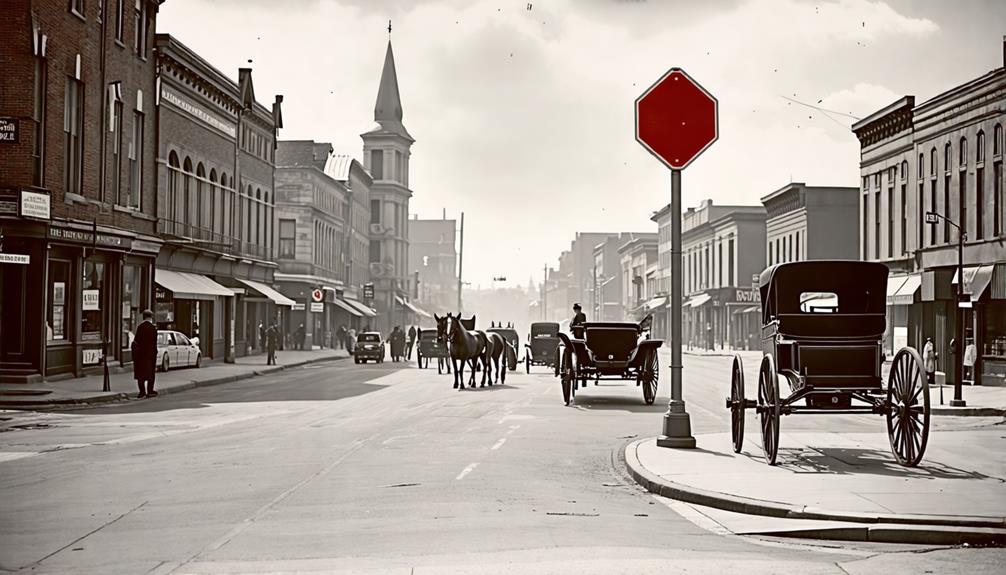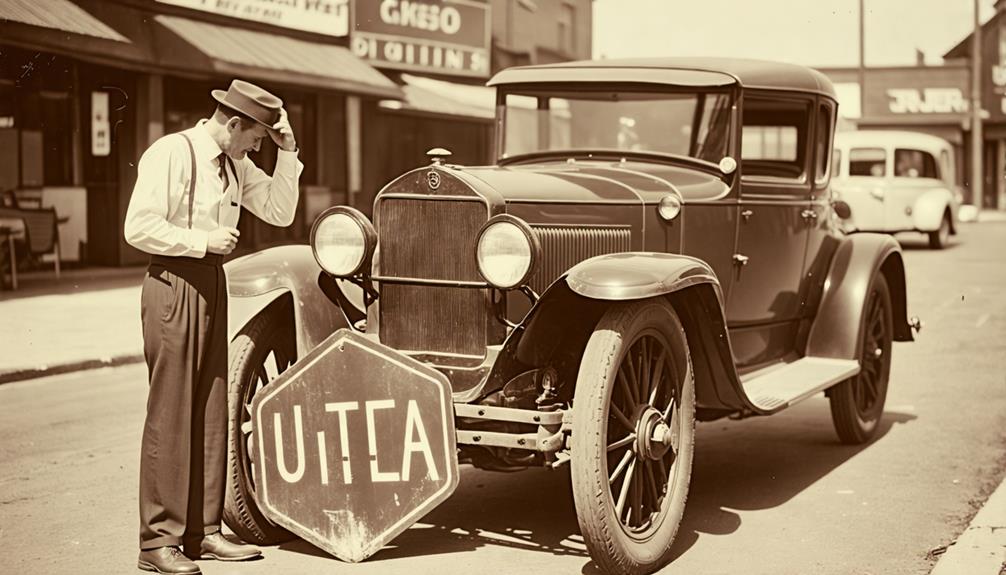You might assume that the person behind one of the most ubiquitous traffic control devices would be an experienced driver, but you'd be wrong. William Phelps Eno, the inventor of the stop sign, never learned to drive a car. Instead, he relied on a chauffeur for transportation. This unusual perspective allowed him to approach traffic safety from a unique angle, focusing on pedestrians and overall urban flow. Eno's lack of driving experience didn't hinder his ability to revolutionize traffic management; in fact, it may have been the key to his innovative solutions. But how did a non-driver become such an influential figure in road safety?
Key Takeaways
- William Phelps Eno, inventor of the stop sign, never learned to drive and relied on a chauffeur.
- Eno's non-driver perspective led to innovative traffic safety solutions, including pedestrian safety islands.
- His observational skills as a pedestrian contributed to groundbreaking traffic management plans for major cities.
- Eno's early experiences, including a traffic jam at age nine, shaped his unique approach to traffic control.
Eno's Unlikely Traffic Expertise

Paradoxically, the man who revolutionized traffic safety never got behind the wheel himself. William Phelps Eno, known as the father of traffic safety, relied on a chauffeur for transportation. His skepticism towards cars stemmed from a belief that they contributed to chaos on the roads. Despite never driving, Eno's expertise in traffic management was shaped by early experiences, including a significant jam he witnessed at age nine in New York City.
Eno's outsider perspective allowed him to identify critical safety issues, leading to groundbreaking innovations. He invented the stop sign, one-way streets, and pedestrian safety islands, revolutionizing urban traffic control. His plans for cities like New York, London, and Paris transformed multimodal transportation systems.
Eno's unique approach to traffic management proves that sometimes, the most effective solutions come from those who view problems from a different angle.
Innovations Without Driving Experience
Defying conventional wisdom, William Phelps Eno revolutionized traffic management without ever sitting behind the wheel of a car. Known as the 'father of traffic safety,' Eno's innovations stemmed from his unique perspective as a pedestrian and observer. Despite never learning to drive, he created groundbreaking traffic plans that continue to shape modern roads.
You might wonder how someone who relied on a chauffeur could develop such effective solutions. Eno's keen observations of traffic chaos, including a memorable jam he witnessed at age nine, fueled his passion for organized systems.
His inventions, like the stop sign, one-way streets, and pedestrian safety islands, transformed city streets worldwide. Eno's approach to multimodal transportation safety wasn't hindered by his lack of driving experience; instead, it allowed him to focus on thorough solutions that benefited all road users.
Legacy of Non-Driver's Vision

Today, you'll find William Phelps Eno's influence on every street corner, thanks to his unique perspective as a non-driver who revolutionized traffic management. Eno's legacy as the man who invented the stop sign extends far beyond this iconic symbol. His non-driver's vision allowed him to approach traffic safety from a broader angle, considering multimodal transportation issues that many car-focused planners overlooked.
Eno's innovations in road safety, including one-way streets and pedestrian islands, continue to shape urban landscapes worldwide. His traffic plans for New York became a model for cities across the globe.
The Eno Center for Transportation, founded in his name, carries on his mission of improving transportation safety and efficiency. By refusing to drive, Eno paradoxically gained a clearer view of traffic's complexities, leaving an indelible mark on modern urban planning.
Conclusion
You might think you need to drive to understand traffic, but William Phelps Eno proves otherwise. His outsider perspective as a non-driver led to revolutionary ideas that shape our roads today.
From stop signs to one-way streets, Eno's innovations continue to keep you safe. Next time you're stuck in traffic, remember that sometimes the best solutions come from unexpected places.
Eno's legacy shows that fresh eyes can see what others miss.

Leave a Reply